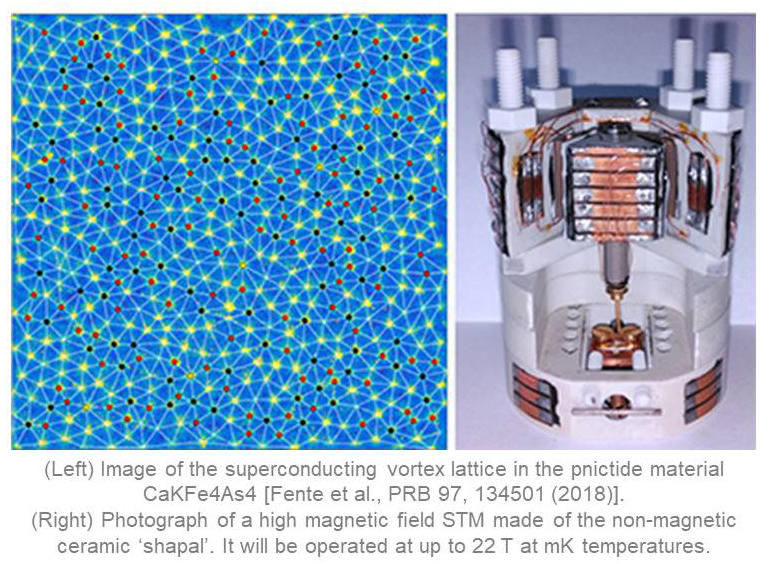10th July 2018
Oxford Instruments’ 22 Tesla superconducting magnet system commissioned at the UAM
Oxford Instruments is pleased to announce that it has recently commissioned a high field magnet system at Dr Isabel Guillamón’s laboratory at the Department of Condensed Matter Physics, Universidad Autónoma de Madrid (UAM), Spain, making it the most intense magnetic field available outside a large international facility.
Isabel Guillamón’s project titled "Using extreme magnetic field microscopy to visualise correlated electron materials (PNICTEYES)", was awarded a Starting Grant by the European Research Council (ERC), for the development of a milikelvin scanning tunneling microscope for high magnetic fields and the study of electronic properties of new superconducting materials. The project allowed the installation of a dilution refrigerator with a superconducting solenoid magnet, capable of providing a magnetic field of 22 Tesla, which is approximately 500,000 times the earth’s field and about 20 times the field of neodymium magnets. Thanks to the project, the UAM now houses the most intense magnetic field available outside a large international facility, such as the European initiative European Magnetic Field Laboratory (EMFL) or the American National High Magnetic Field Laboratory (MagLab).
Dr Guillamón and her team will also build a microscope for these international facilities, improving the capacity of these facilities in the field of microscopy. Microscopes with high magnetic fields allow the direct visualisation of the electronic correlations, necessary to give conclusive answers to questions of Condensed Matter Physics, in fields such as graphene, nanotechnology, superconductivity or magnetism. Within the framework of this project, the origin of high-temperature superconductivity will be investigated by studying new iron-based superconducting materials.
“With this magnet we will significantly increase the magnetic field value currently available for STM studies, in particular I am interested in the Field/Temperature ratio. Thanks to this equipment, using which we will truly open new avenues. Being able to access ultra-high fields in this new magnet along with the STM will enable us to get microscopic insight into emergent electronic phenomena in new ways not previously accessible elsewhere in our parameter space”, commented Dr Guillamón.
Isabel Guillamón develops her research activity at the Low Temperatures Laboratory of the Universidad Autónoma de Madrid (LBTUAM), and is also a member of the Condensed Matter Physics Institute (IFIMAC) and the Nicolás Cabrera Institute (INC). Graduated in Physics from the Universidad de Murcia, she obtained her PhD in 2009 from the Universidad Autónoma de Madrid. She has carried out a postdoctoral stay at the University of Bristol and a stay at Stanford University. Among her many distinctions, it is worth mentioning the award of the Nicholas Kurti European Science Prize 2015. The AXA Foundation also recognised her merits by granting it one of the 30 projects financed in 2014.
“The 22 T is the highest field magnet outside a central magnet laboratory and is a major step towards the future-leading science”, commented Dr Michael Cuthbert at Oxford Instruments. “This further confirms Oxford Instruments’ world-class capability to develop state-of-the-art high-field superconducting magnet systems that are successfully used for many record-breaking projects, benefiting researchers in both physical and life sciences”.




